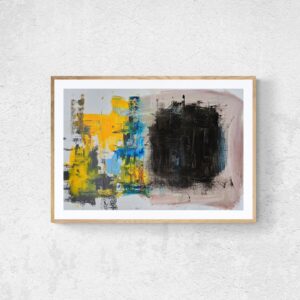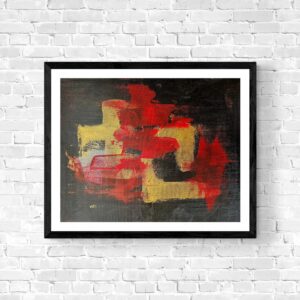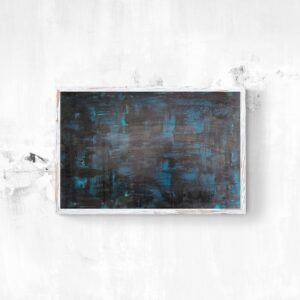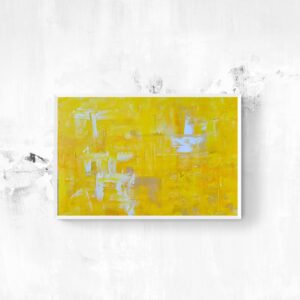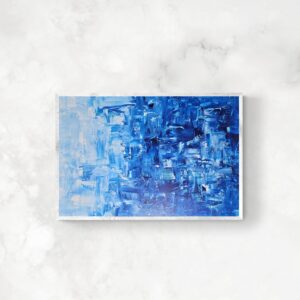
The landmark exhibition The Magical City: George Morrison’s New York at the Metropolitan Museum of Art expands common notions of who were the major figures in Abstract Expressionism. In Morrison (Grand Portage Band of Lake Superior Chippewa), it also introduces the museum-going public to an artist who has long been sequestered because of his ethnicity. Born in Chippewa City, Minnesota, in 1919, one of 12 children, he began drawing as a child when multiple surgeries left him confined for months to a full body cast.
After receiving the Ethel Morrison Van Derlip Traveling Scholarship in the early 1940s, he moved to New York to study at the Art Students League from 1943 to ’46 — a fertile period for creativity in the city, which was full of dislocated and emigrant artists — and entered into the group known as the Abstract Expressionists. He left New York in 1947, first to teach in Massachusetts and then, in 1952, to study art in Paris on a Fulbright scholarship, before relocating briefly to Duluth, Minnesota. He returned to New York in 1954, where he renewed his relationship with many of the Abstract Expressionists who had welcomed him in the ’40s, and met Willem de Kooning and Jackson Pollock. By this time, his work had matured and he had found his artistic voice, which shared some qualities with those of Clyfford Still and Philip Guston, but was not indebted to them.

The Magical City, curated by Patricia Marroquin Norby (P’urhépecha), associate curator of Native American Art in The Met’s American Wing, includes paintings, works on paper, and ephemera. Among the latter is an announcement for a 1954–55 group show at the Tanager Gallery, an important artist-run co-op founded by Lois Dodd, Charles Cajori, Angelo Ippolito, William King, and Fred Mitchell, as well as copies of the 1947 and 1956 Whitney Annual catalog — all of which confirm that he was active in the burgeoning downtown New York art scene. I was fascinated to discover how much Morrison was part of this mix. I recognized easily why his work from the ’50s was held in high regard by his contemporaries, and I was dismayed by how quickly it was neglected by the New York art world after the rise of Pop Art and Minimalism, and the critical narratives supporting the overarching belief that art must progress.
While Morrison was one of many casualties lost in the transition from one trend to the next, his elision in canonical histories left me with a bitter taste. He was not the only artist of color associated with Abstract Expressionism who is regularly left out of most accounts. A museum survey bringing together the work of Norman Lewis, Matsumi “Mike” Kanemitsu, Ed Clark, and many others associated with Abstract Expressionism would help to correct these omissions.

In particular, six paintings in The Magical City, dating from 1953 through ’58, stood out to me. Made when Abstract Expressionism was supposedly on the wane, according to the influential art critic Clement Greenberg, and Color Field painting, which Greenberg championed, was on the rise, all six have a heavily worked impasto surface. This alone sets Morrison apart from his New York contemporaries, many of whom were exploring paint as a liquid medium to be poured (Pollock and Helen Frankenthaler) or applied in thin washes so the hand is not evident (Ad Reinhardt and Mark Rothko).
The titles of two of these pieces, “The Red Sky” (1955) and “Aureate Vertical” (1958), underscore Morrison’s interest in the Minnesota landscape of his youth, while their variegated surfaces, shifts in tone, and the interlocking geometric motifs of “The Red Sky” look like they could have been inspired by Ojibwe crafts. Just as Lewis opened the vocabulary of Abstract Expressionism to allude to a Black experience, Morrison evoked Indigenous experience.

In “Aureate Vertical,” the subtle tonal shifts pull viewers closer and slow them down. While we may get lost in the looking, however, our reveries are interrupted by streaks of red and bits of blue peeking through a surface dominated by yellows and tans. In “The Red Sky” the interlocking gray, dirty white, and reddish-orange forms might be holding up the sky’s thick slab. Or is the sky pushing down, compressing the forms? The tension is palpable.
I was struck by the fact that Morrison’s paintings of the 1950s were recognizable as his, and, in that regard, hold their own when compared to Abstract Expressionists with signature styles, from Adolph Gottlieb to Barnett Newman, even though he never developed one. Through his art, he comes across as both confident and restless, always searching for the next combination of color and form rather than a motif. As many discoveries and insights as I gained from this compact, beautifully installed exhibition, a deepening curiosity about the artist arose. This is what a museum exhibition should do: leave us hungry for more.





The Magical City: George Morrison’s New York continues at the Metropolitan Museum of Art (1000 Fifth Avenue, Manhattan) through May 31, 2026. The exhibition was curated by Patricia Marroquin Norby.

